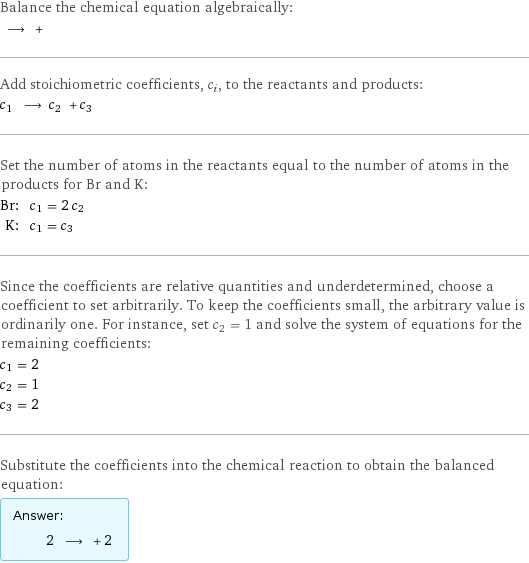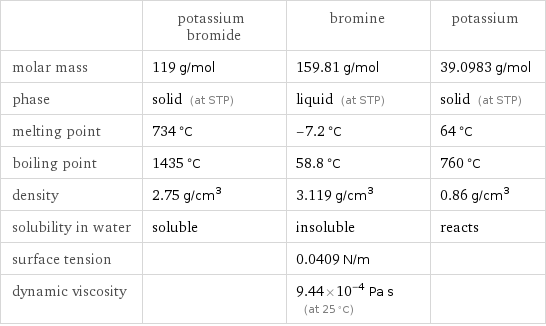Input interpretation

potassium bromide ⟶ bromine + potassium
Balanced equation

Balance the chemical equation algebraically: ⟶ + Add stoichiometric coefficients, c_i, to the reactants and products: c_1 ⟶ c_2 + c_3 Set the number of atoms in the reactants equal to the number of atoms in the products for Br and K: Br: | c_1 = 2 c_2 K: | c_1 = c_3 Since the coefficients are relative quantities and underdetermined, choose a coefficient to set arbitrarily. To keep the coefficients small, the arbitrary value is ordinarily one. For instance, set c_2 = 1 and solve the system of equations for the remaining coefficients: c_1 = 2 c_2 = 1 c_3 = 2 Substitute the coefficients into the chemical reaction to obtain the balanced equation: Answer: | | 2 ⟶ + 2
Structures

⟶ +
Names

potassium bromide ⟶ bromine + potassium
Chemical names and formulas

| potassium bromide | bromine | potassium Hill formula | BrK | Br_2 | K name | potassium bromide | bromine | potassium IUPAC name | potassium bromide | molecular bromine | potassium
Substance properties

| potassium bromide | bromine | potassium molar mass | 119 g/mol | 159.81 g/mol | 39.0983 g/mol phase | solid (at STP) | liquid (at STP) | solid (at STP) melting point | 734 °C | -7.2 °C | 64 °C boiling point | 1435 °C | 58.8 °C | 760 °C density | 2.75 g/cm^3 | 3.119 g/cm^3 | 0.86 g/cm^3 solubility in water | soluble | insoluble | reacts surface tension | | 0.0409 N/m | dynamic viscosity | | 9.44×10^-4 Pa s (at 25 °C) |
Units
